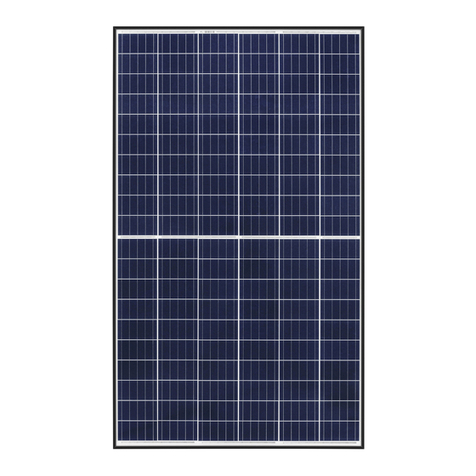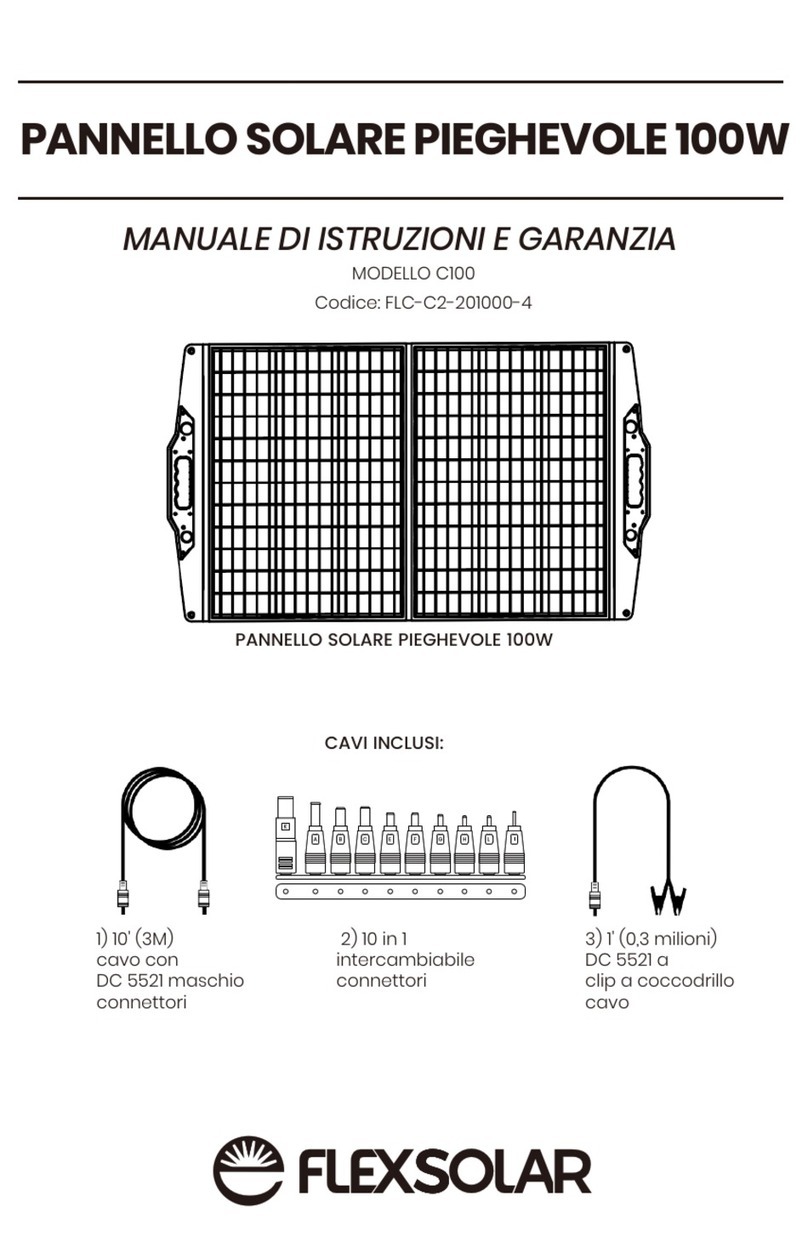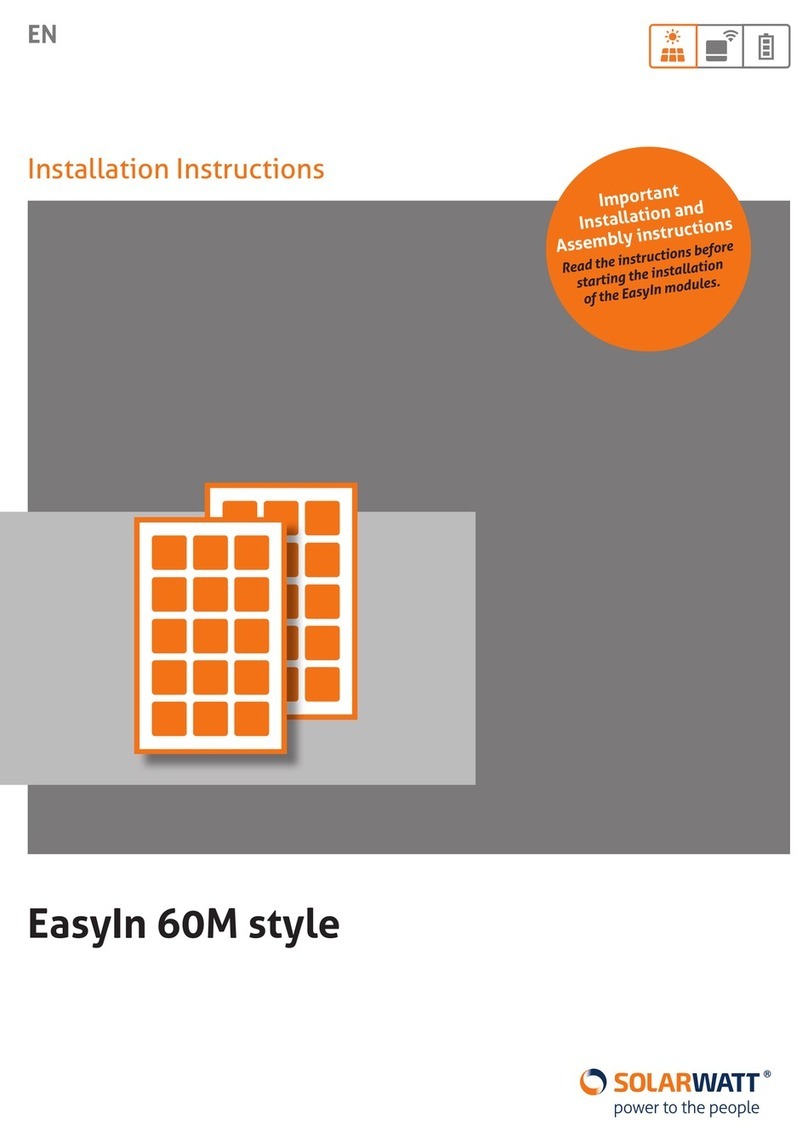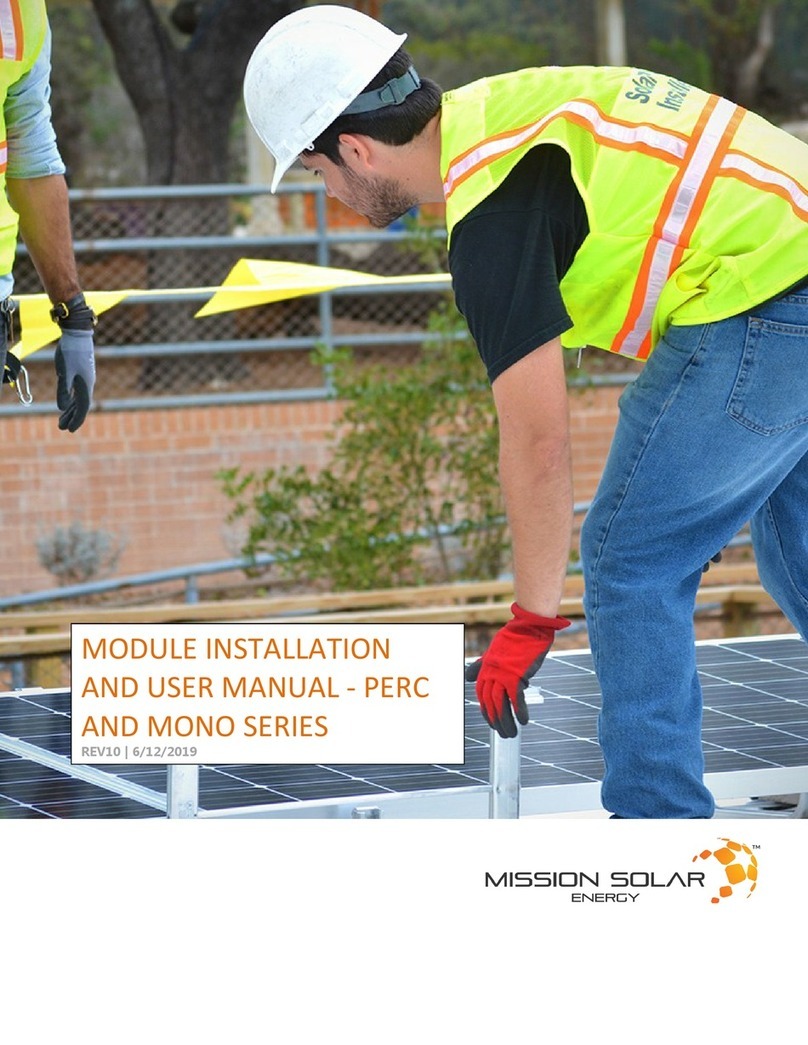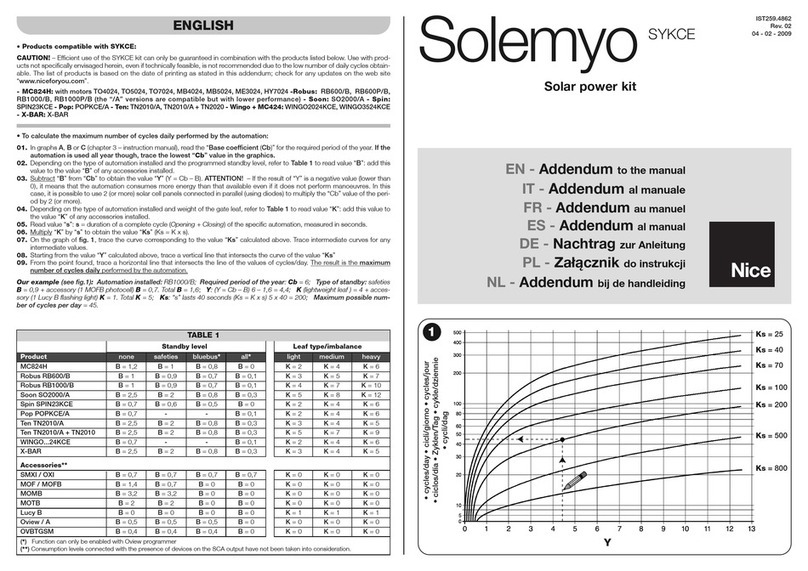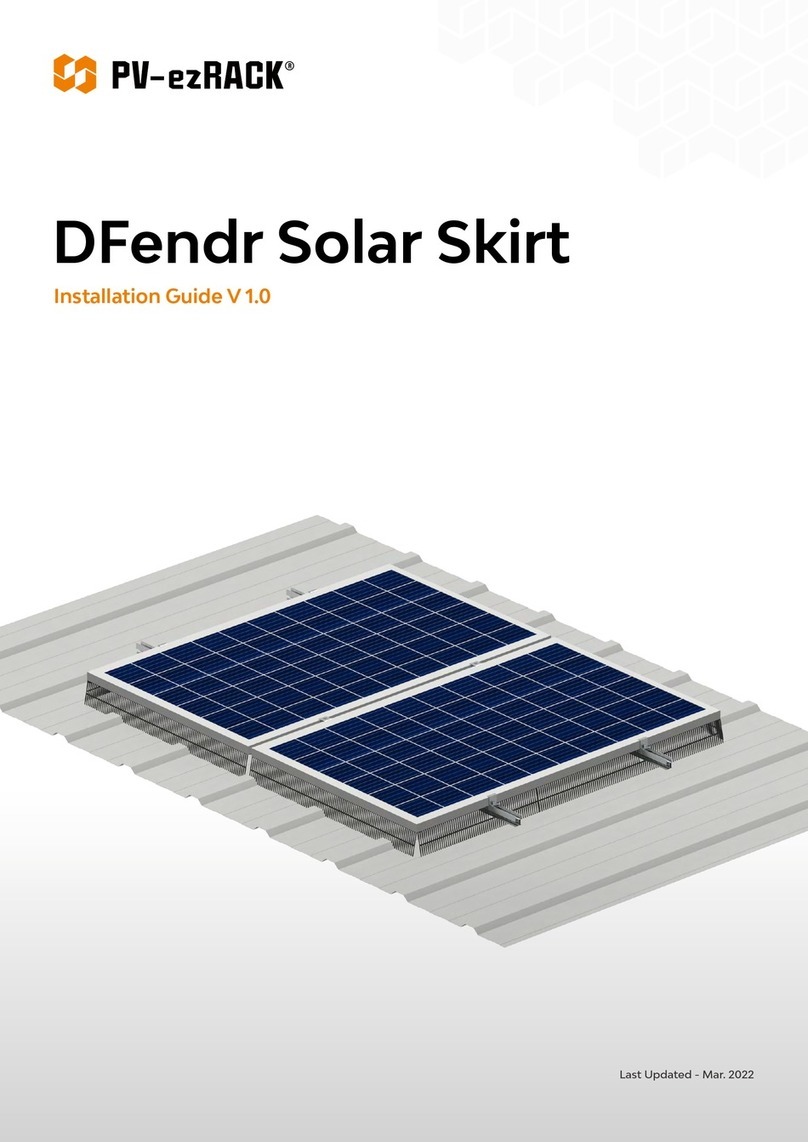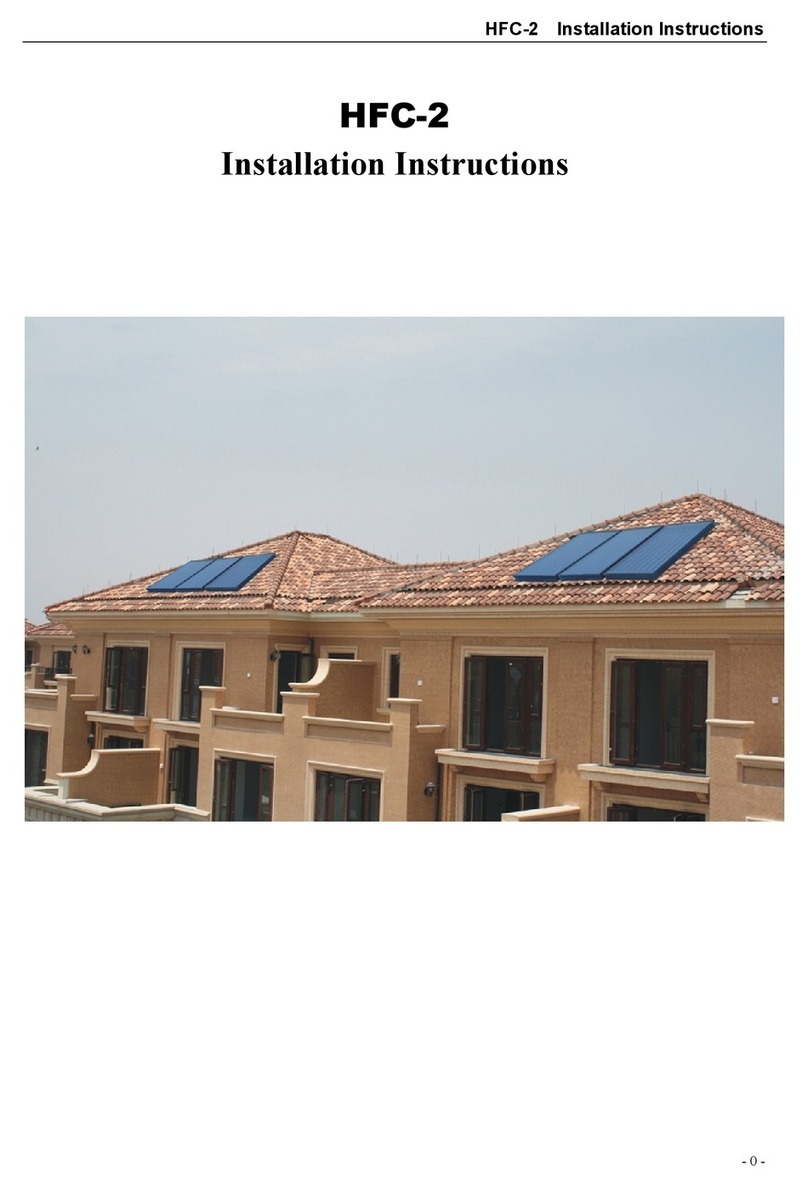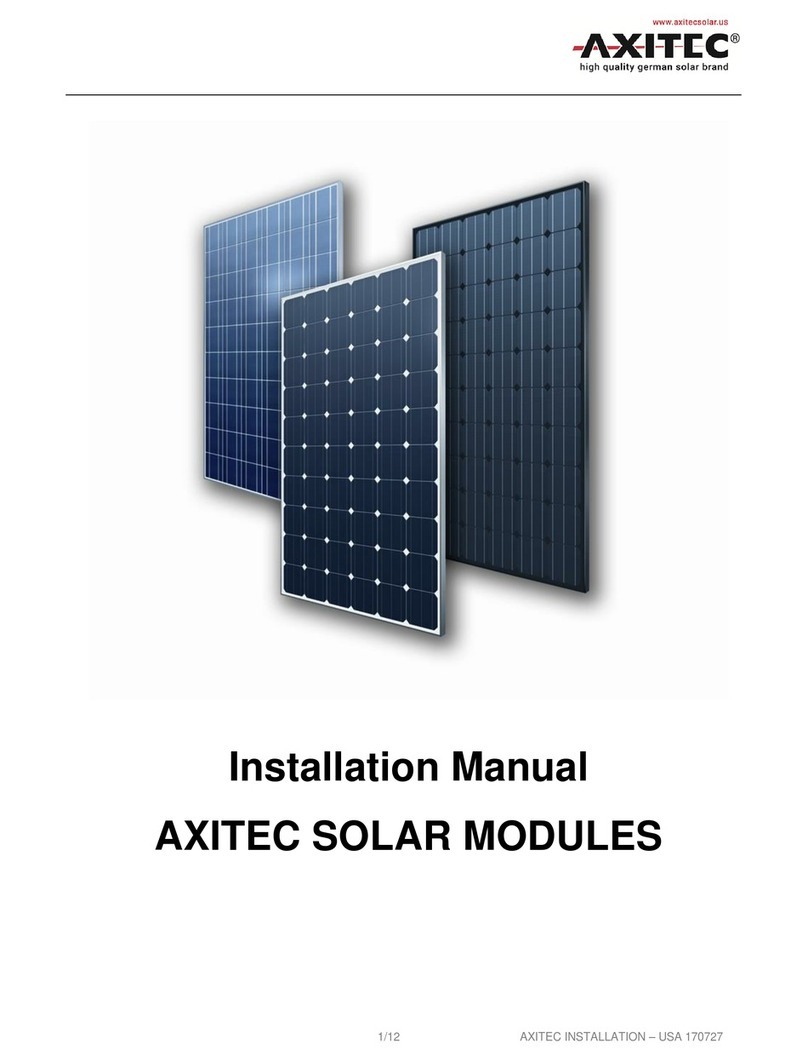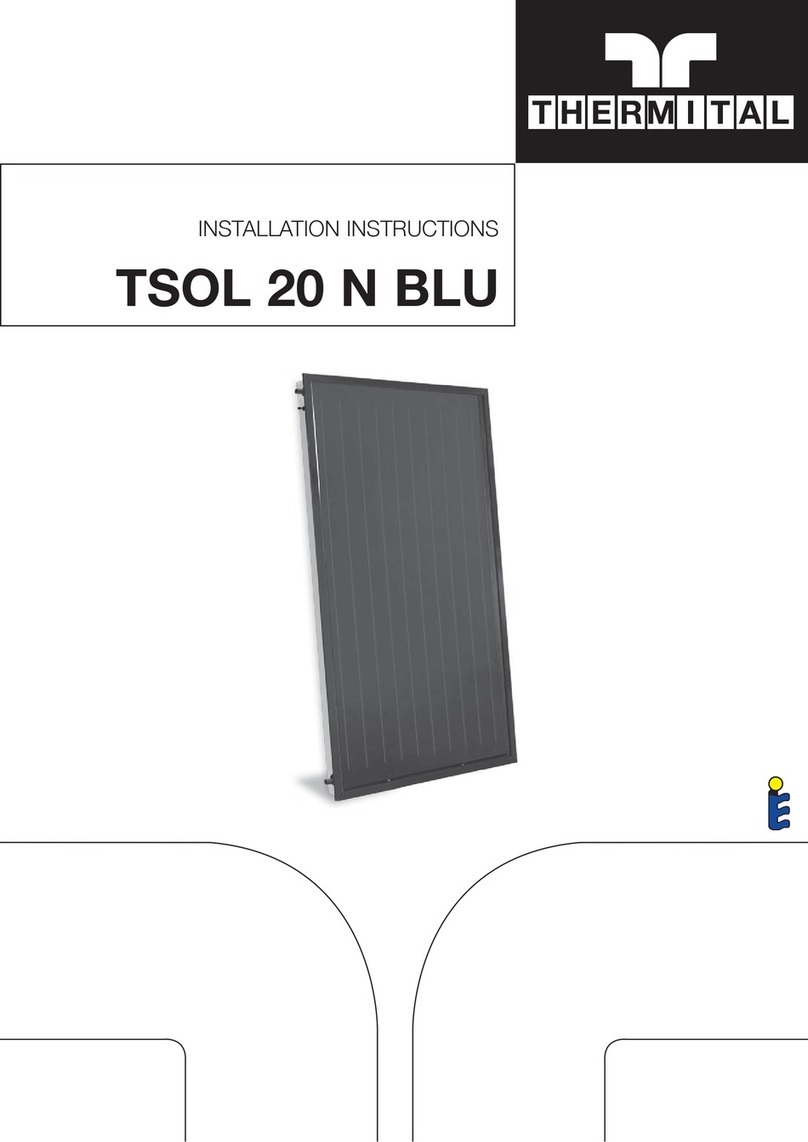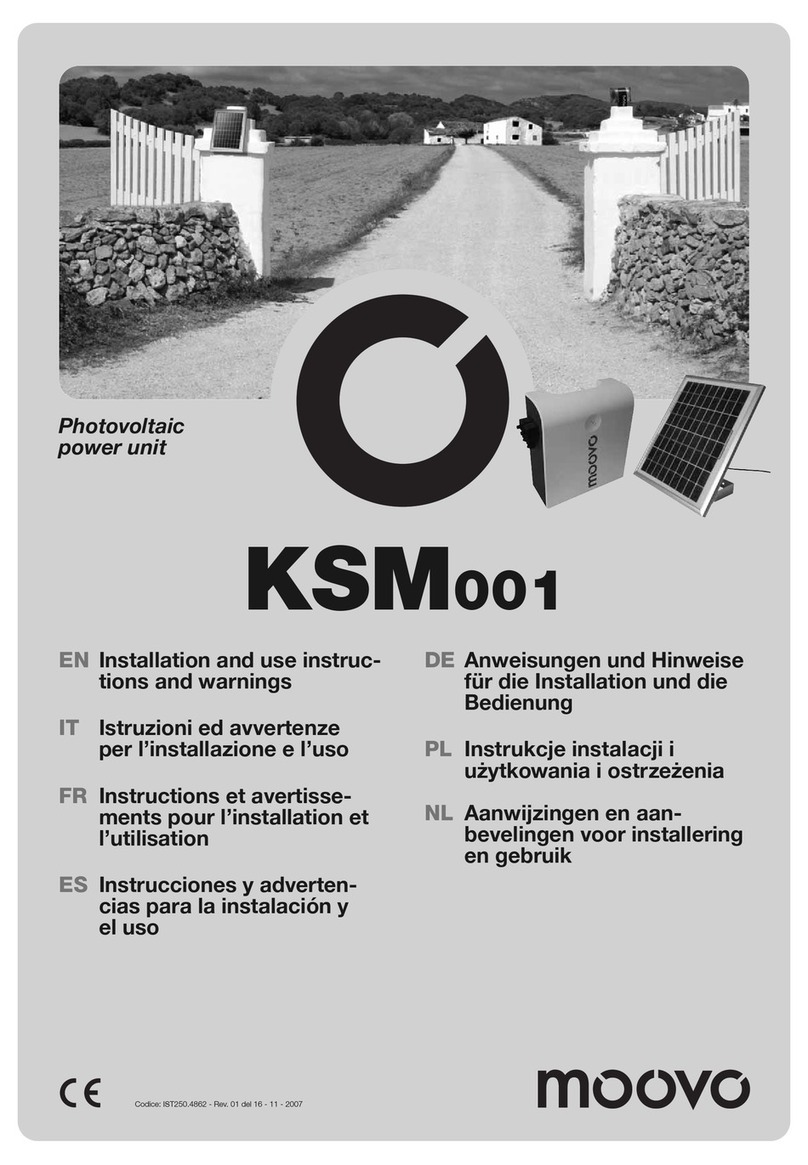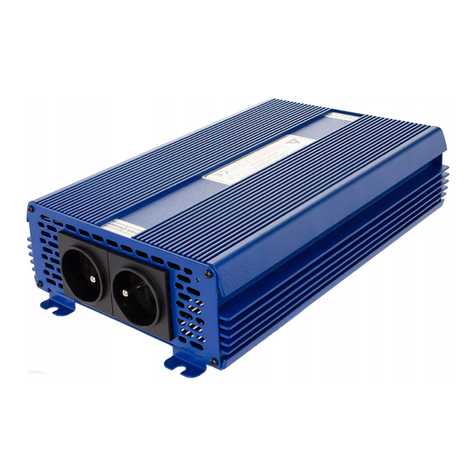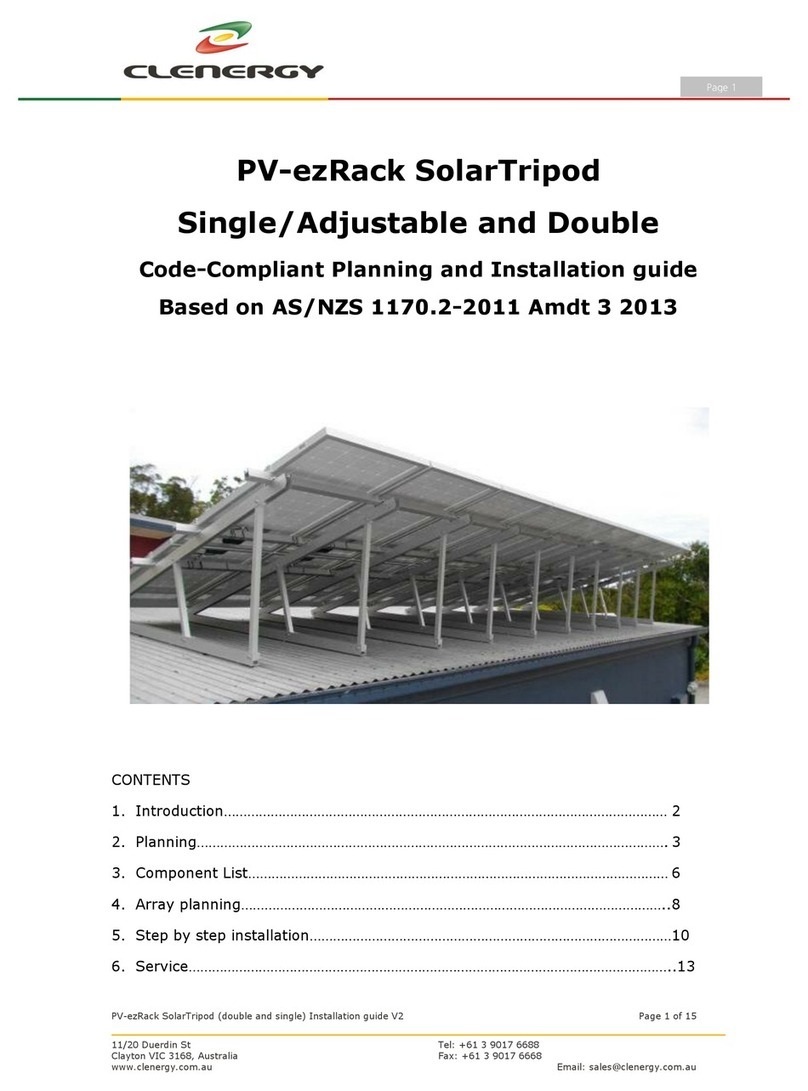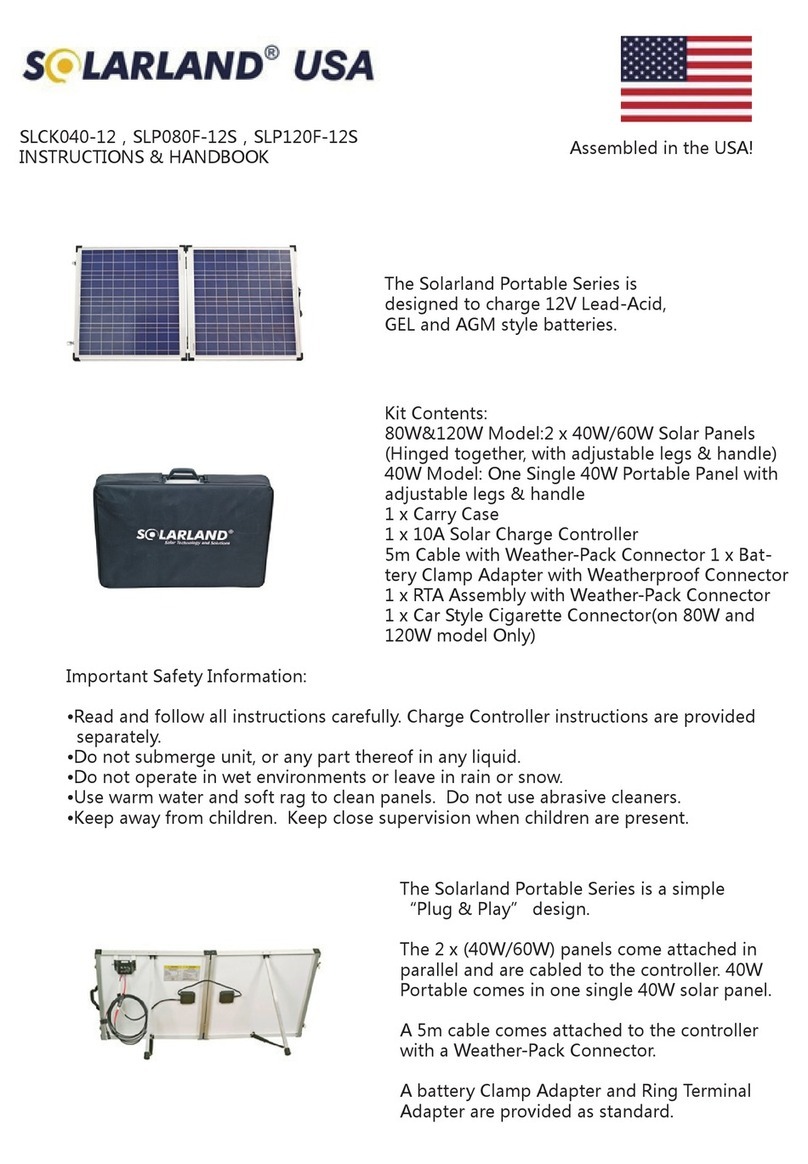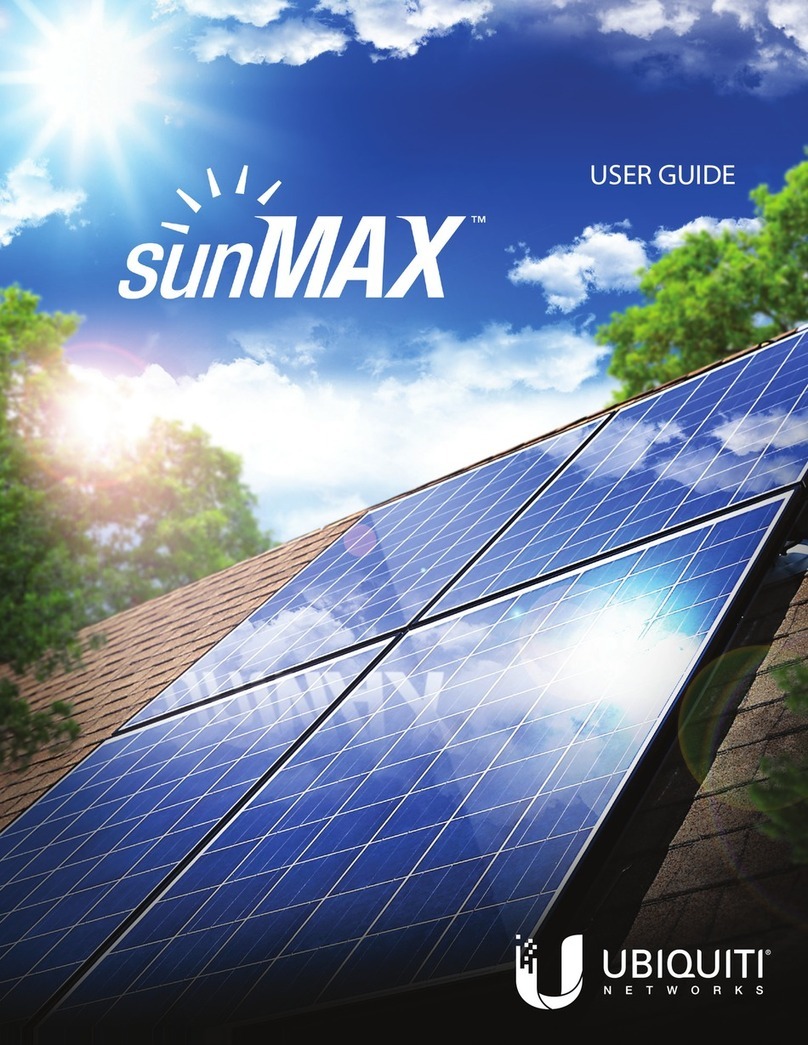
3– English
COMPONENT ASSEMBLY AND CONNECTIONS
CHAPTER 5
STEP 1 – Assembly of photovoltaic panel support bracket
Assemble all components of the support bracket on the rear of the
panel, as shown in g. 3.
Caution! – The bracket at the rear of the panel must be positioned
(g. 3-b)accordingtothetypeofpositioninwhichthepanelis
mounted. To select the position, refer to g. 6.
STEP 2 – Photovoltaic panel positioning
Caution! – For optimal operation of the panel, it must be
positioned precisely in the selected location. Therefore, after
performingthechecksasdescribedinchapter3,strictlyobserve
thefollowinginstructions:asageneralrule,thepanelmustbeposi-
tioned so that it can receive the maximum possible sunlight during
thedayandthroughouttheyear.Thismeansthatitshorizontalposi-
tion and vertical angle must be calculated on the basis of the location
where it is to be installed.
•Ensure the correct position of the panel on the horizontal
planeasfollows:
a) In the installation site, determine the cardinal points NORTH and
SOUTH, with the aid of a compass or a geographical map of the
location.
b) Then position the panel in the direction NORTH or SOUTH,
accordingtothefollowing:
– if the installation site is in a country North of the equator
(UnitedStates;Europe;Russia;etc.)thepanelmustbeposi-
tioned exactly SOUTH;
– if the installation site is in a country South of the equator
(LatinAmerica;Australia;Indonesia,etc.)thepanelmustbeposi-
tioned exactly NORTH.
For further information, refer to g. 4.
•Ensure the correct position of the panel on the vertical plane
asfollows:
Consideringthatitispreferabletoensuremaximumefciencyofthe
panelduringthewinterperiod,whenthereislessenergyavailable
than in the summer, the panel should be positioned at an angle that
ensuresreceptionofthesunraysperpendicular(fromfront)tothe
sensitive surface.
This angle corresponds to the latitude of the location and can be
readonanycommercialgeographicalmap.Forexample,Madrid
hasalatitudeof40°;Venice45°;orLondonapprox50°etc.For
further information, refer to g. 5.
STEP 3 – Fixing the photovoltaic panel in the selected site
Afterestablishingtheprecisepositionofthepanel,xtotheselected
surface as shown in g. 6.
STEP 4 – Fixing the battery in the selected site
After performing the checks as described in chapter 3 and establish-
ingtheprecisepositionofthebattery,xtotheselectedsurfaceas
shown in g. 13. Note–usethe2lowerscrewsonlyifyouwishto
anchorthebatteryinapermanentposition,i.e.whenremovalisnot
required.
STEP 5 – Cable routing
IMPORTANT! – The cables supplied must be used in
indoor and protected environments. For use outdoors,
the cables must be protected with adequate ducting.
Afterxingthepanelandbattery,routethepanelcablethroughthe
tubeorprotectionductingthroughtothebattery.
With reference to the instruction manual of the automation to be
powered, remove the control unit protection cover. Then pass the
end of the power cable (with wires exposed) through the automation
(where the other cables are routed). Then route the cable through
theprotectionducting(ifpresent)throughtothebattery.
Caution!–Donotconnectthepowercabletothecontrolunit;leave
access to the control unit open.
STEP 6 – Assembly of “L” socket on the photovoltaic panel
cable
If the cable is too long, it can be shortened, taking care to strip the
wires so that their length is equaltothevaluesspeciedintheg.
20 (caution! –differentlengthsmayimpairsubsequentassemblyof
the socket).
ThenproceedwithassemblyoftheGREY “L”typesocketonthe
endofthepanelcable,asfollows:
01. Insert the various elements of the socket on the cable, taking
care to observe the sequence as shown in g. 7;
CAUTION! – Do not modify the electric jumper on the connec-
tor (g. 8).
02. Using a slotted screwdriver, attach the blue wire to terminal
n° 1 on the connector and the brown wire to the earthing
terminal (4) (g. 9):
Note–Thereferencenumbersandsymbolsareprintedonthe
connector below the terminals and on the opposite side.
03. Afterxingthetwowires,inserttheconnectorinitscasing
(g. 10).
Important – The correct position of the connector is that
with the earthing symbol in the lower position (see g. 10);
04. Then pull the cable outwards from the socket and insert the
seal and washer (g. 11-a-b).Lastly,tightenthecableclamp
(g. 11-c) using a wrench, toguaranteecompletelysealedclo-
sure.
05. After assembling the socket, position the seal supplied on the
connection side (g. 12).
STEP 7 – Assembly of “L” socket on the power cable
If the cable is too long, it can be shortened, taking care to strip the
wiressothattheirlengthisequaltothevaluesspeciedintheg.
20 (Caution!–differentlengthsmayimpairsubsequentassemblyof
the socket).
ThenproceedwithassemblyoftheBLACK“L”typesocketonthe
endofthepowercable,asfollows:
01. Insert the various elements of the socket on the cable, taking
care to observe the sequence as shown in g. 7;
CAUTION! – Do not modify the electric jumper on the connec-
tor (g. 8).
02. Using a slotted screwdriver, attach the blue wire to terminal
n° 1 on the connector and the brown wire to the earthing
terminal (4) (g. 9):
Note –Thereferencenumbersandsymbolsareprintedonthe
connector below the terminals and on the opposite side.
03. Afterxingthetwowires,inserttheconnectorinitscasing
(g. 10).
Important – The correct position of the connector is that
with the earthing symbol in the lower position (see g. 10);
04. Then pull the cable outwards from the socket and insert the
seal and washer (g. 11-a-b).Lastly,tightenthecableclamp
(g. 11-c) using a wrench, toguaranteeacompletelysealed
closure.
05. After assembling the socket, position the seal supplied on the
connection side (g. 12).
STEP 8 – Connecting the photovoltaic panel to the battery
Toconnectthepaneltothebattery,proceedasfollows:
01. Connect the GREY“L”typesockettothe“IN” connector on
thebattery(g.14);
02. Toselectthemostsuitableconnectioncongurationforthe
IS0492A00MM_29-11-2016_SOLEKIT.indd 3 22/06/17 12:12
